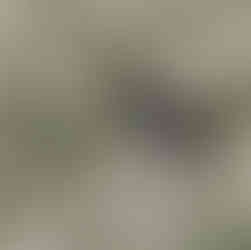3 minutes from possible disaster
- Jewels
- Dec 23, 2018
- 2 min read
The first photo shows how the colouring is starting to come through, not just along the top of the head, but also starting along the shoulder blades, where the wings are. The chick now needs to duck when entering the sun/wind/rain shelter.
It was a terrible day out on the Spit on Saturday. Should have been quiet given weather conditions of expected rain and strong southerlies. It was also really unpleasant being out there as it was colder than expected with the southerly wind in your face the whole time. My fingers were so numb I had trouble taking photos. Once I made it home my fingers had pins and needles thawing them out on a cup of coffee.
The Spit started out really busy. There was the Bushies runners/walkers, yabby pumpers (commercial and non) then a large group of paddle skiers and a few other tinnies (one with dog, the photo has a raven in the foreground).
The worst part was that I have been enjoying the company of some endangered little terns for about 10 days now. They are a joy to watch and listen to as they fish.
One flew straight over my head this morning, then dived into the lagoon about 15 metres from me. It scored a fish and the fish dropped from its beak, but it managed to fly down and scoop that fish back up before it hit the water.
Out of nowhere, bam, a falcon came in and took the little tern. As this was right by the roosting site for the oystercatchers, with chick, the male oystercatcher sprung into gear trying to attack the falcon.
The oystercatchers delayed swimming their chick across the lagoon to the feeding grounds so they could walk across with it, escorting it, on both sides. The ospreys appear to have moved on, with the falcon taking their place.
We had a new member of the raptor group today, Sunday, the sea eagle. It Is a regular winter to spring visitor but I have not spotted it this nesting season at all, until today.
Our oystercatcher family attempted a crossing to the mangroves just before noon but kayaks coming from Bonnievale and from the Basin stopped them. This meant they waited another half an hour before trying again. This is good to know as today was a relatively quiet day, the kayaks appeared just at the wrong time. Our volunteers over the Xmas break are going to be crucial to prevent our oystercatcher family being boxed in on the beach, away from food and shelter, or stuck in the mangroves when the tide gets too high.
The crossing today did complete, half an hour after when the parents initially wanted to take to the chick. Three minutes after arriving at the other side of the lagoon, where the better shelter under the roots of the mangroves are, a sea eagler started circling the lagoon. The parent birds were making a huge ruckus and flew back to the beach, well away from the chick. Had the chick still been crossing it may not have gone well.
Hope you all have a wonderful Xmas and let’s hope our oystercatcher family continues to enjoy good luck and invaluable help from their volunteer group.










Comments